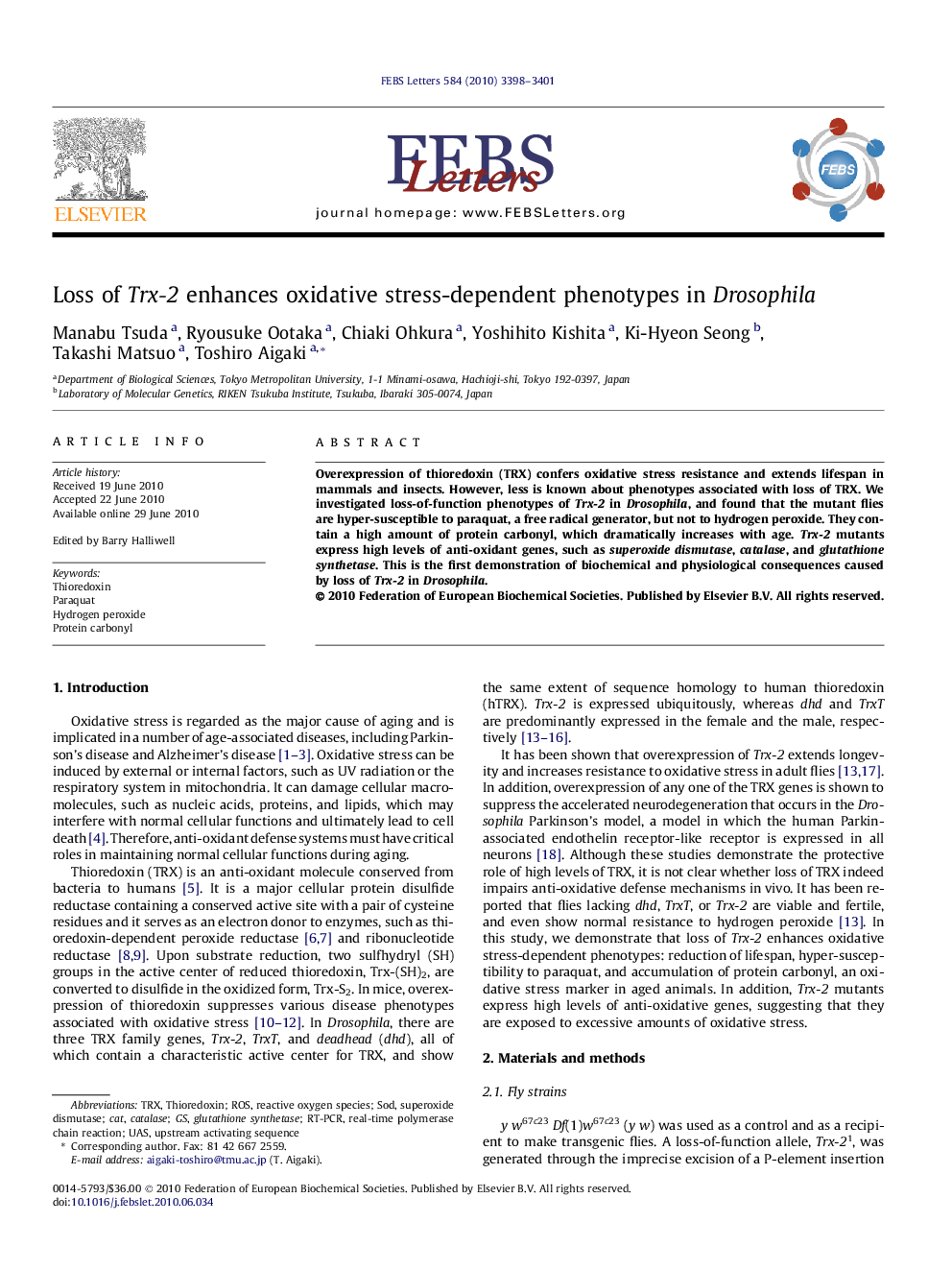| Article ID | Journal | Published Year | Pages | File Type |
|---|---|---|---|---|
| 2049053 | FEBS Letters | 2010 | 4 Pages |
Abstract
Overexpression of thioredoxin (TRX) confers oxidative stress resistance and extends lifespan in mammals and insects. However, less is known about phenotypes associated with loss of TRX. We investigated loss-of-function phenotypes of Trx-2 in Drosophila, and found that the mutant flies are hyper-susceptible to paraquat, a free radical generator, but not to hydrogen peroxide. They contain a high amount of protein carbonyl, which dramatically increases with age. Trx-2 mutants express high levels of anti-oxidant genes, such as superoxide dismutase, catalase, and glutathione synthetase. This is the first demonstration of biochemical and physiological consequences caused by loss of Trx-2 in Drosophila.
Keywords
Related Topics
Life Sciences
Agricultural and Biological Sciences
Plant Science
Authors
Manabu Tsuda, Ryousuke Ootaka, Chiaki Ohkura, Yoshihito Kishita, Ki-Hyeon Seong, Takashi Matsuo, Toshiro Aigaki,
